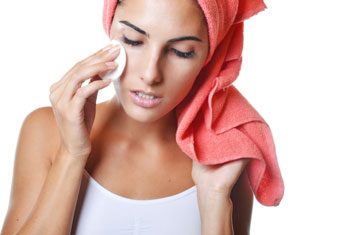
Get gorgeous skin at home
From fitness wristbands to the invention of Google Glass, it’s clear we are living in Generation Gadget. It’s fitting, then, that in the beauty aisles, there are now at-home devices for virtually every skin concern: sonic face brushes that speed-clean pores; microcurrent-powered massagers that promise to tone up slack facial skin; and hand-held devices with laser beams to smooth fine lines.
Some of these devices use technology similar to what’s available at the dermatologist’s office or the spa-but do the DIY versions work? There’s no easy answer. “When it’s approved by Health Canada or the [U.S.] FDA, it’s approved for safety, not efficacy,” clarifies Dr. Julia Carroll, dermatologist and director of Compass Dermatology in Toronto.
So adjust your expectations. A $500 off-the-shelf laser won’t pack the same heavy-duty power as a doctor’s $200,000 machine. That said, certain at-home devices can be a good complement to dermatologist procedures or spa treatments, says Carroll, especially when used as “maintenance” between visits.
Here’s what the experts say these innovations can and can’t do, and how to best incorporate them into your routine. Do note that if you have any skin or health conditions, you should check with a doctor before trying a device. Some gadgets are off-limits if you are pregnant or breastfeeding; take certain medications; or have moles, allergies or other issues. Always read the instructions that come with a device for any restrictions.
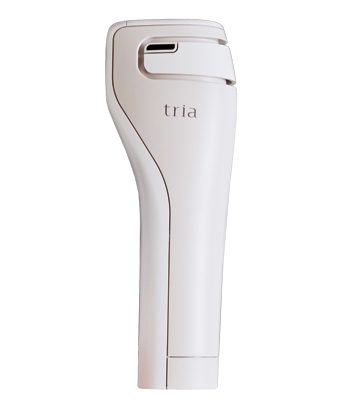
The anti-ager
Tria Beauty Age-Defying Laser, $495, available at Sephora, sephora.ca; triabeauty.ca.
The technology: This is a hand-held non-ablative fractional laser, meaning it doesn’t vaporize a whole layer of tissue (unlike ablative machines used by professionals, which require downtime-meaning time spent hiding indoors until your skin looks presentable again). The device uses targeted beams of light to stimulate the natural cell renewal cycle in order to generate collagen. This kick-starts the skin’s self-repair process, resulting in fresh, new cells, with diminished fine lines and wrinkles as well as less noticeable age spots.
The pro’s opinion: According to Dr. Andrei Metelitsa, dermatologist and medical co-director of the Institute for Skin Advancement in Calgary, this mimics office-based non-ablative fractional technology, and can improve overall skin appearance, reduce wrinkling and diminish pigmentation. But the benefits will take a while to show up: “Visible results [are] most apparent after several months of use,” he says.
The how-to tips: First, wash your skin well, since oil, makeup and other gunk can block the light. Treat your face evenly (go zone by zone-instructions are included), and just once nightly for eight weeks. Then take a four-week break so skin can regenerate before you repeat the eight-week cycle. You can continue this on-then-off pattern for as long as
you want.
Mild discomfort or a prickly sensation is normal, but you should not feel pain. Some people also experience temporary redness and slight swelling during or immediately after treatment, so start with the “low” intensity setting until your skin gets accustomed to the laser. It’s essential to use sunscreen during the eight-week period of laser treatment, warns Carroll: Having a tan can affect how the light is absorbed. Plus, once your dark spots have faded, you don’t want UV damage to bring them back.
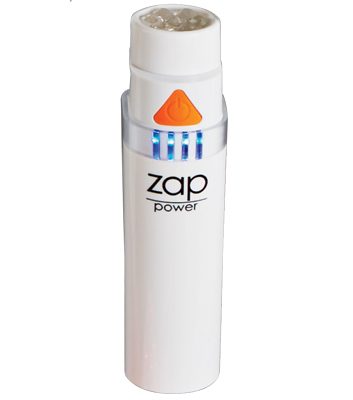
The acne buster
Tanda Zap Power, $79, available at Hudson’s Bay, thebay.com; tanda.ca.
The technology: Designed as a targeted spot treatment (not a full-face device), this gadget features not only antibacterial blue LED light, but also pore-opening sonic vibration and gentle warming to help tame breakouts. It can be used by teens and adults alike, no matter what your skin type or tone.
The pro’s opinion: “It is well-known that blue light therapy works well to reduce mild inflammatory acne,” says Metelitsa. For mild red pimples, OTC blue light devices such as this one can work as well as topical blemish products do, he adds.
The how-to tips: On cleansed skin, place the device on the breakout for two minutes, three times daily, until it disappears. The company claims it can kibosh 85 percent of acne-causing bacteria after six minutes, helping to reduce a breakout within 24 hours. The device works best on mild to moderate red pimples, so if your condition is more severe-with deep, hard or knot-like flare-ups-consult your doctor.
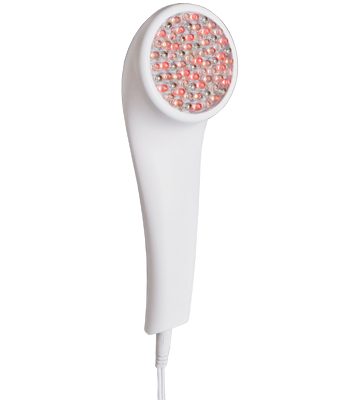
The wrinkle smoother
LightStim for Wrinkles (with Collagen Peptide Serum), $275, available at Murale, murale.ca; theshoppingchannel.com; lightstim.com.
The technology: This tool uses a variety of light-emitting diodes (LEDs)-amber, red and infrared. The claim is that skin absorbs this energy, which then stimulates the production of collagen and elastin (the key proteins responsible for keeping the skin plump and line-free), relieves inflammation and speeds cellular repair. (Researchers at a variety of hospitals in the U.S. have indeed been studying whether LEDs can promote wound healing.)
You can undergo LED beauty treatments in-office as well; they’re sometimes dubbed “cold lasers” since they are painless and don’t damage the skin using heat, although they are not technically lasers.
The pro’s opinion: While LED treatments claim to induce cells to make collagen, Carroll is skeptical they are powerful enough to yield noticeable changes. For now, she would characterize LED technology overall as “a promising concept.”
If you are going to try it, be patient: LightStim says that it takes, on average, two months of use before people begin to see improvements in fine lines and wrinkles.
The how-to tips: For best results, use the product five to seven times a week. After washing your face, gently hold the device on one area for three minutes before moving on to the next section. The process should take about 30 minutes in total. Once you have achieved the results you want, you can downgrade to two sessions weekly for maintenance.
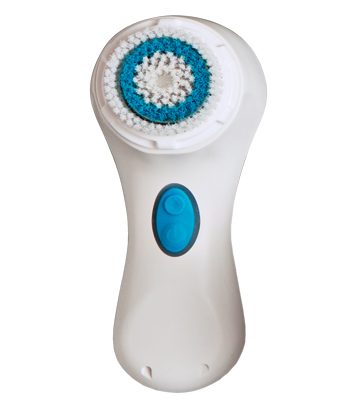
The pore detoxer
Clarisonic Deep Pore Decongesting Solution (with a Mia2 device, Deep Pore Brush Head, Daily Cleanser and Clay Mask), $200, available at Sephora, sephora.ca; select retailers; clarisonic.ca.
The technology: By oscillating at high frequency, this cleansing tool loosens the sticky debris plugging your pores. Unlike the original model that comes with the Sensitive brush head, the new kit has a Deep Pore brush head with dual-action bristles: The inner rings oscillate in counter-rotation to flex and relax skin surrounding pores and purge congested skin.
The pro’s opinion: “The Clarisonic is one gadget I definitely recommend. I don’t know what I would do without it,” says Kristy Livingston, medical aesthetician and skincare advisor at the Project Skin MD dermatology clinic in Vancouver, who uses the device herself. “The oscillating technology literally shakes the dead cells off the skin.”
The how-to tips: Apply any non-abrasive skin cleanser to wet skin or the damp brush itself. Switch on the tool, and move it around your face in small circles, spending 20 seconds on your forehead, 20 seconds on your nose and chin, and 10 seconds per cheek. You can use the device once or twice daily. After using it for two weeks, you should notice smaller-looking pores and smoother skin texture.
The Clarisonic can be used on almost any skin type, says Livingston, as long as you select the right brush head. The Deep Pore version is designed for oily complexions, so if you have rosacea or hyper-sensitive skin, there’s a Delicate option that is sold separately; adjust the intensity accordingly. In Carroll’s experience, the Clarisonic has only a mild exfoliating effect, so you could still keep other exfoliating products in your routine.
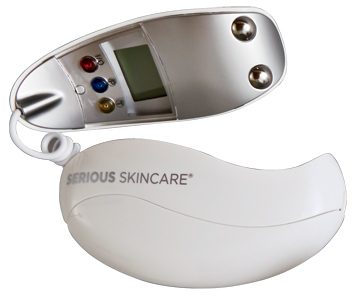
The face firmer
Serious Skincare Microcurrent Egg Superlift Kit, basic model $190, available at theshoppingchannel.com.
The technology: This device includes two hand-held units you position on opposite sides of your face; they then generate low-level electrical impulses to spur involuntary (but not painful) muscle contractions. The premise is that facial exercising has a firming effect on slack skin, similar to the way a workout tones your body. You can also find microcurrent treatments at spas and select dermatologist offices; they are sometimes marketed as an “electro-stim facial,” a “galvanic facial” or even a “non-surgical facelift.” The company says this at-home tool (adjustable from level 1 to 10) offers the same intensity as those that are found in spas, and can be used by adults of any age to lift and tighten skin.
The pro’s opinion: There is limited research to back up the use of microcurrents for anti-aging, so the experts are split. “They are unlikely to do much harm or much good,” says Carroll. However, Metelitsa is keeping an open mind: “I believe that they provide an interesting complement to more conventional methods of facial rejuvenation.”
The how-to tips: Apply the conductive gel (included) to the device’s metal orbs; hold them to your clean, dry face; and adjust the intensity until you feel a tingling sensation and gentle muscle contraction. Depending on the results you want-general maintenance, surface toning or deep toning-you could use this device from once weekly to once daily, for a total of 10 to 20 minutes each time, over six weeks. Some people experience surface redness (from increased blood circulation), sensitivity or even irritation. If you have a health condition such as heart trouble or seizures, seek your doctor’s okay first. Do not use this product if you have any skin issues, including irritation or sunburn. “And if someone was getting Botox done, I would not want them to use this afterwards because it could reduce the efficacy of the Botox,” says Carroll.
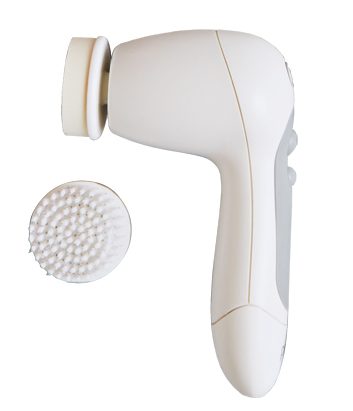
The skin buffer
Olay Pro-X Microdermabrasion + Advanced Cleansing System (with Exfoliating Renewal Cleanser and Thermal Crystal Polisher), $47, available at drugstores.
The technology: Despite the name, this device is not the kind of microdermabrasion that’s done by dermatologists or aestheticians, says Livingston. The pro service typically involves pairing a vacuum-like suction with crystals to manually wear away the layer of dead skin cells. This at-home tool is gentler-it couples the buzz of a rotating foam brush with a gritty, warming crystal polish. The combination is designed to exfoliate skin more thoroughly than by hand alone, though not as well as in-office microdermabrasion.
The pro’s opinion: Scrubbing often feels satisfying because you can see a smoother, brighter complexion right away. “And this one can be helpful for reducing blackheads and dullness,” says Carroll. After you have sloughed away the buildup of dead skin cells, you will be better able to absorb benefits from your other skincare products.
The how-to tips: You can use this device for both regular cleansing and intense exfoliation. To spin away grime on a daily basis: Set the soft-bristle brush head on Speed 1 or 2. For the “microderm”-inspired buffing: After you have cleansed, massage the Thermal Crystal Polisher onto your face, use the foam brush head on Speed 3, and whir for a minute before rinsing. You can do this up to twice a week, on non-consecutive days. “If you are using Retin-A or other chemical exfoliator, you might find that your skin is a bit more sensitive [after the buffing],” says Carroll. So if you do experience stinging, don’t apply these potent ingredients on the same nights as you exfoliate.
Related:
• 9 days to younger, healthier looking skin
• Natural home remedies: Dry skin
• How exfoliation helps your skin
